
I love graveyards. All human life is there, in a manner of speaking. Death, after all, is a part of life. Other people's death is a part of your life.
Graveyards tell you so much about a place and its people that they are, in a strange way, a resource. I would like to see schools taking an interest in them, visiting them, studying them, adopting them even. It could do a lot to spark pupils' interest in local history and contribute to strengthening the community.
I happened on Kilbarrack cemetery, near Sutton, the other morning while out walking. Despite the early hour it was open so I went in and had a very brief look around. My impressions are recorded below and I think they bear out what I was saying above.
Graveyards tell you so much about a place and its people that they are, in a strange way, a resource. I would like to see schools taking an interest in them, visiting them, studying them, adopting them even. It could do a lot to spark pupils' interest in local history and contribute to strengthening the community.
I happened on Kilbarrack cemetery, near Sutton, the other morning while out walking. Despite the early hour it was open so I went in and had a very brief look around. My impressions are recorded below and I think they bear out what I was saying above.
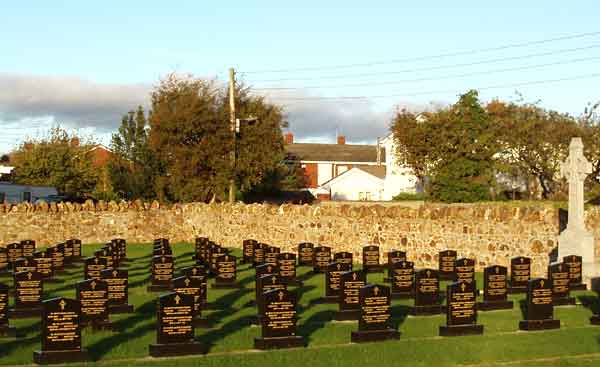
The first thing that struck me when I reached the far end of the graveyard was the nuns. What appeared to be hundreds of them in a separate walled enclosure. I'm sure I didn't know there were that many nuns in the country, dead or alive.
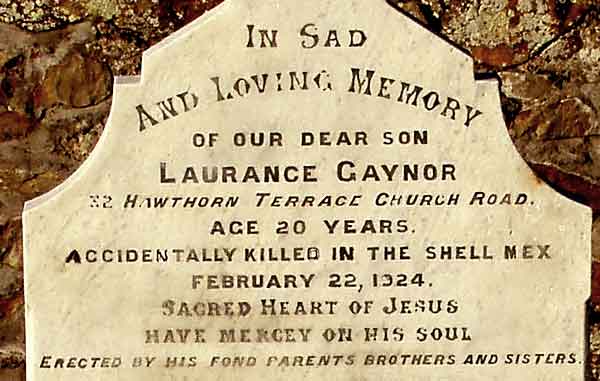
The young lad killed in the Shell Mex in 1924. I tried to Google this accident and came up a blank. The Shell Mex appears to have been a petrol tanker and clearly the incident was not sufficiently important to have been reported in the newspapers. But to this family it was very important.

The lady who died in Lourdes. Was she assisting on a pilgrimage, or had she gone there looking for a cure. Or, was she just there on holidays.
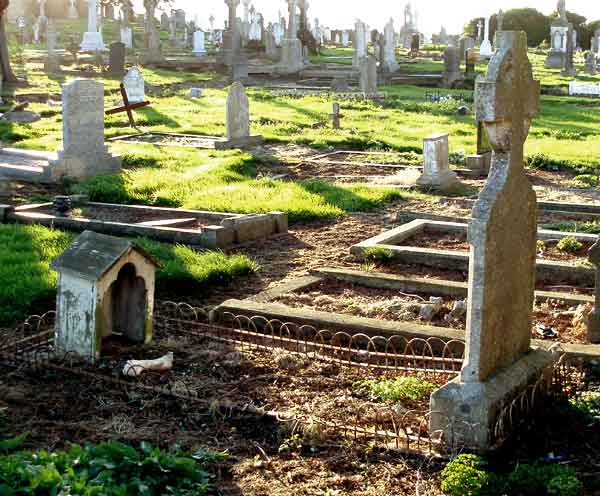
The kennel and big doggybone at the bottom of the grave. The grave of a lady who seems to have died in childbirth and whose infant died two months later. [1923]
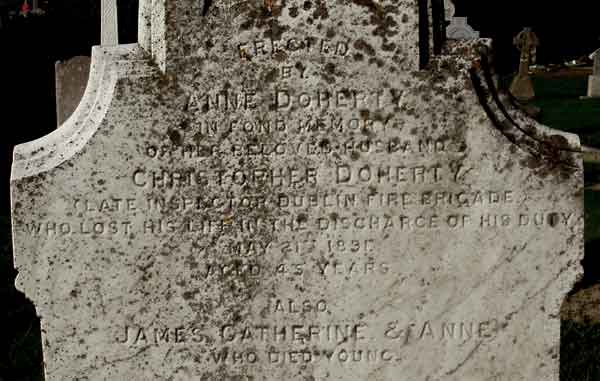
The fireman who lost his life in the line of duty in 1831.

A wise couple, or is it their survivors, who know that the real legacy you leave behind is what you have done. In stark contrast to those pompous tombstones which boast the material achievements of the person to the extent that you would wonder if it had struck them yet that they were dead.
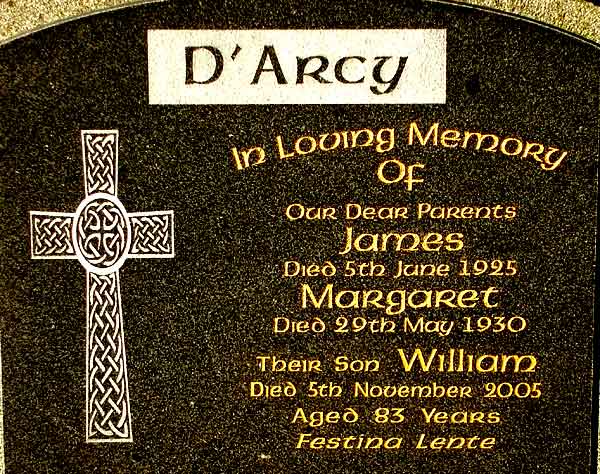
Telling a man who has lived to 83 years of age and outlived his parents by 75 years to "hasten slowly" !
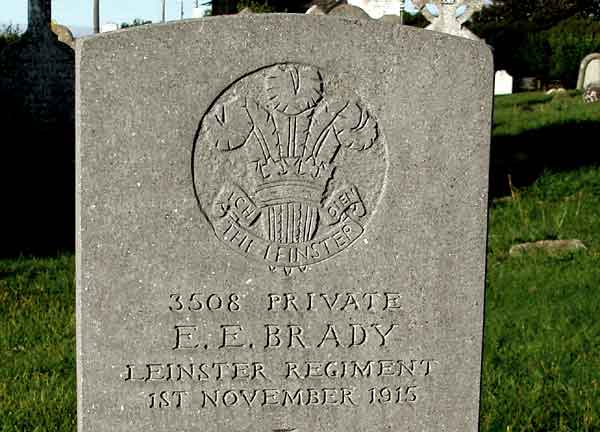
Very few cemeteries are untouched by the First World War, the "Great War for Civilisation". How would those soldiers who gave their lives in a cause, or had them taken away from them, view the results of their sacrifice today?
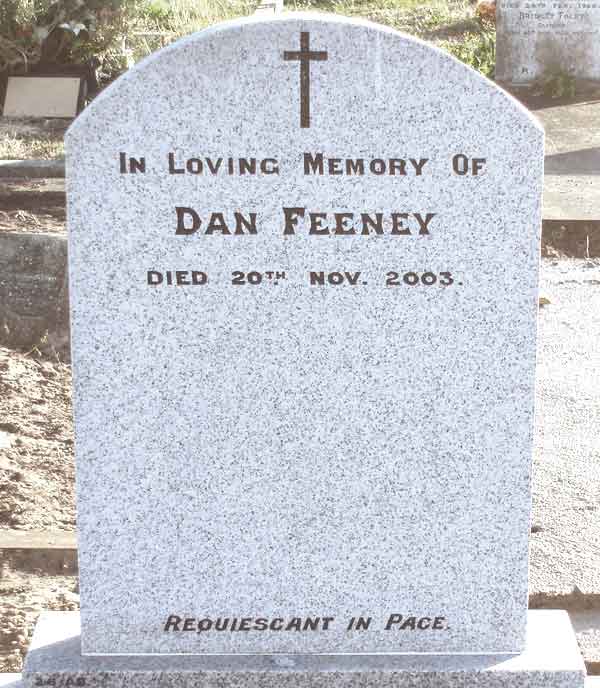
Thinking ahead. There is, as yet, only one occupant listed for this grave on the tombstone, yet the inscription reads, "may THEY rest in peace".
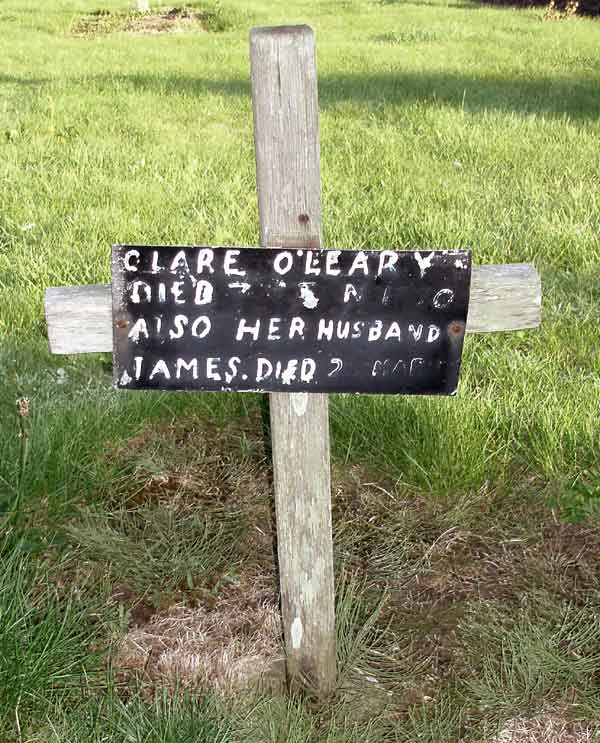
A lonely and simple cross, with its weathered and incomplete inscription.
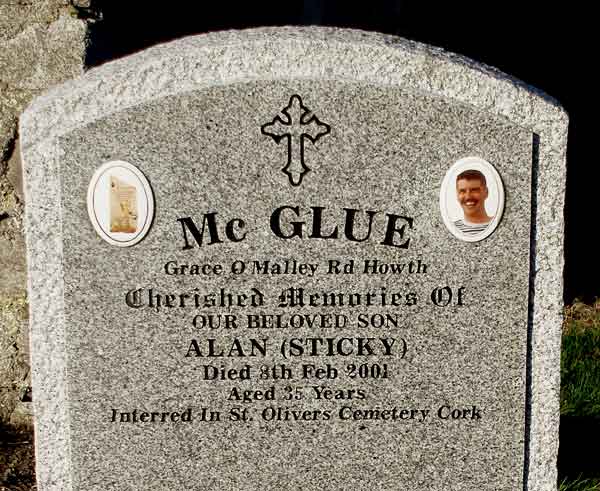
A touch of humour beyond the grave. This McGlue presumably earned the nickname "Sticky" from his surname,
The stone is purely by way of a memorial as Alan is buried in Cork.
An aspect I haven't covered, but one which struck me as I wandered around was the provenance of those buried here. Some from out of town. Some from various parts of the city centre. Population movement over the years is reflected here. I must come back another day for a further look.
The stone is purely by way of a memorial as Alan is buried in Cork.
An aspect I haven't covered, but one which struck me as I wandered around was the provenance of those buried here. Some from out of town. Some from various parts of the city centre. Population movement over the years is reflected here. I must come back another day for a further look.

Update (9/5/2013)
The above is based on a casual walk through the cemetery. Since posting it I have learned some other things about the cemetery.
For example, Gordon Brewster and his parents are buried here. Gordon was a cartoonist and art editor with Independent Newspapers and he died in my mother's shop in 1946.
Eoin Mac Neill and his brother James are buried here. I'm actually related to that pair.
The Sweetman family from Raheny are buried here. John was a United Irishman and submitted plans for the Pro-Cathedral.
And Francis Higgins, the "Sham Squire", who once owned the Freeman's Journal and seems to have been a despicable character, is also buried here, though I gather the extravagant monument erected to him had violence done to it by an angry populace and is no longer around.